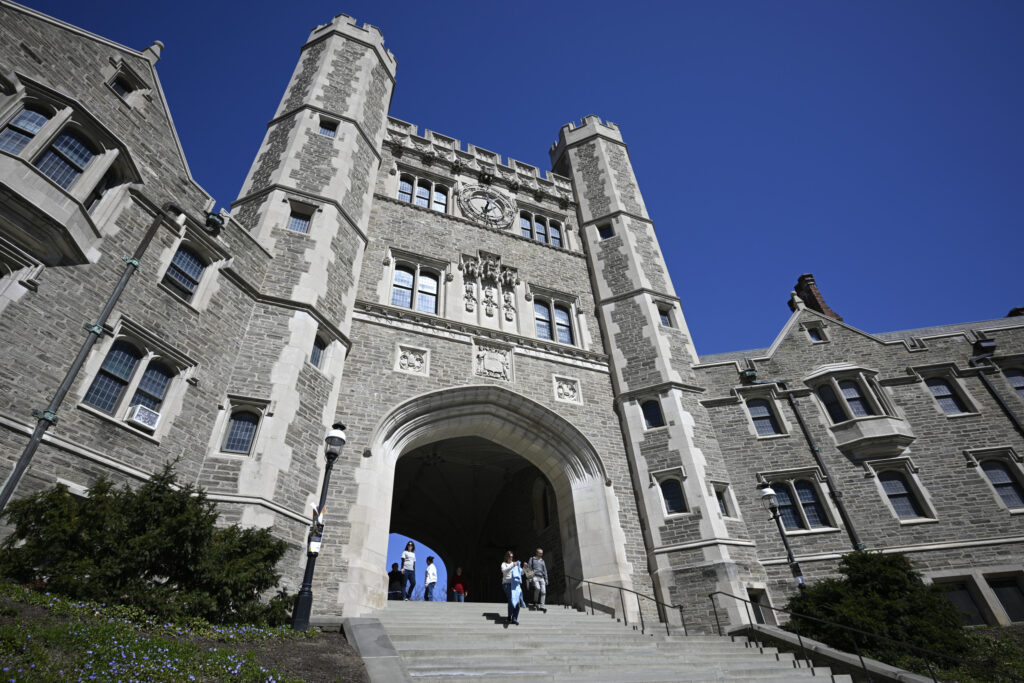Princeton University, one of the “Big Three” Ivy League schools, has expanded its financial aid program as it welcomes the Class of 2029, which it says comprises the school’s “largest-ever number of low-income students.”
Newsweek has reached out to Princeton University for comment via email on Sunday.
Why It Matters
Princeton’s announcement comes after months of the Trump administration targeting colleges and universities, threatening to withdraw federal grants and pressuring them to meet its demands, all amid a broader affordability crisis with millions of Americans struggling to pay off trillions in student debt.
Last month, with the passage of President Donald Trump’s “One Big Beautiful Bill,” universities with very large endowments, such as Princeton, will face a new tiered tax on their endowment investment income, with rates up to 8 percent.
What To Know
In an August 7 press release, Princeton’s office of communications said, “Most families with incomes up to $150,000 a year will now pay nothing for their student to attend Princeton, receiving aid to cover the total cost of attendance, including tuition, housing, food, books and personal expenses.”
For the 2025-26 school year, Princeton estimates the cost of attendance at about $91,000. That includes $65,210 for tuition, roughly $12,500 for housing, about $9,000 for food, just under $300 in fees, and a little over $4,000 for miscellaneous expenses such as books and personal costs.
The cost of college has soared exponentially in recent decades, with Princeton’s tuition climbing about 165 percent since 2000, when it was $24,630.
The announcement also noted that “most undergraduate families with incomes up to $250,000 will pay no tuition.” It is not clear how the university will determine who will and won’t pay tuition.
Families with incomes up to $350,000 “will receive grant aid, including those at higher income levels with multiple children in college.”
The selective school said it is welcoming a first-year class with the “largest-ever number of lower-income students.” Higher education has long struggled with opportunity, affordability, and access. Princeton noted that around 25 percent of the incoming class are eligible for federal Pell Grants, the highest in the University’s history.
The university estimates that the average aid package for the coming school year will be more than $80,000, with around 69 percent of the class qualifying for some aid.
To do so, the university is drawing on its endowment, valued at about $34.1 billion and has averaged a 9.2 percent annual return over the past decade.
According to analysis by the conservative think tank, American Enterprise Institute, Princeton could face a $217 million tax on its endowment next year.
Universities may be able to reduce their endowment tax liability by expanding financial aid programs, which can lower the number of tuition-paying students counted under the law.
What People Are Saying
Princeton University Provost Jennifer Rexford said in the press release: “Through our increased investment in financial aid, we are making the transformative experience of a Princeton education more affordable for more students than ever.”
Nonresident AEI senior fellow Mark Schneider and research associate Christopher Robinson, wrote in a July 14 analysis: “The actual revenue generated by the endowment tax might differ from our estimates if universities alter their behavior. If some decide to expand student enrollment, that could lower their tax liability by reducing assets held per student. Taxable income would also be reduced if endowments adopt a variety of tax sheltering strategies, or if they decide that now is the time to realize capital losses on underperforming assets.”
What Happens Next
The university’s new financial aid program takes effect this school year, with classes starting in September, and first-year programming beginning later this month.
Elsewhere, some top universities, such as Harvard, Yale, and Stamford are laying off staff and imposing hiring freezes, according to the Associated Press.
Read the full article here
